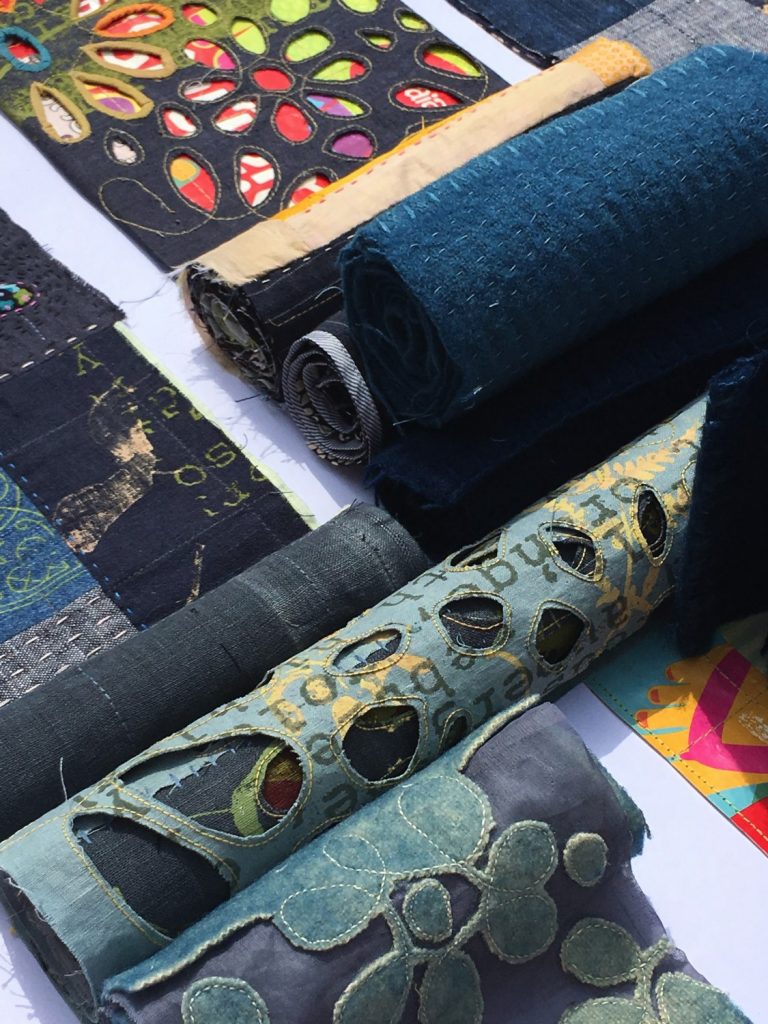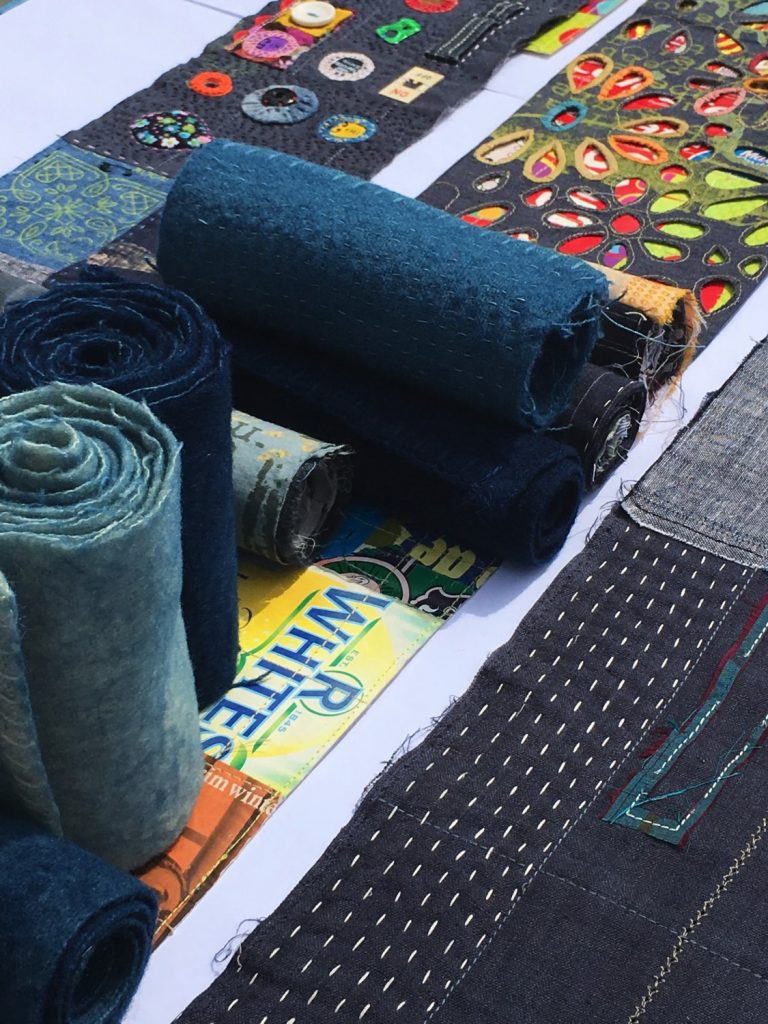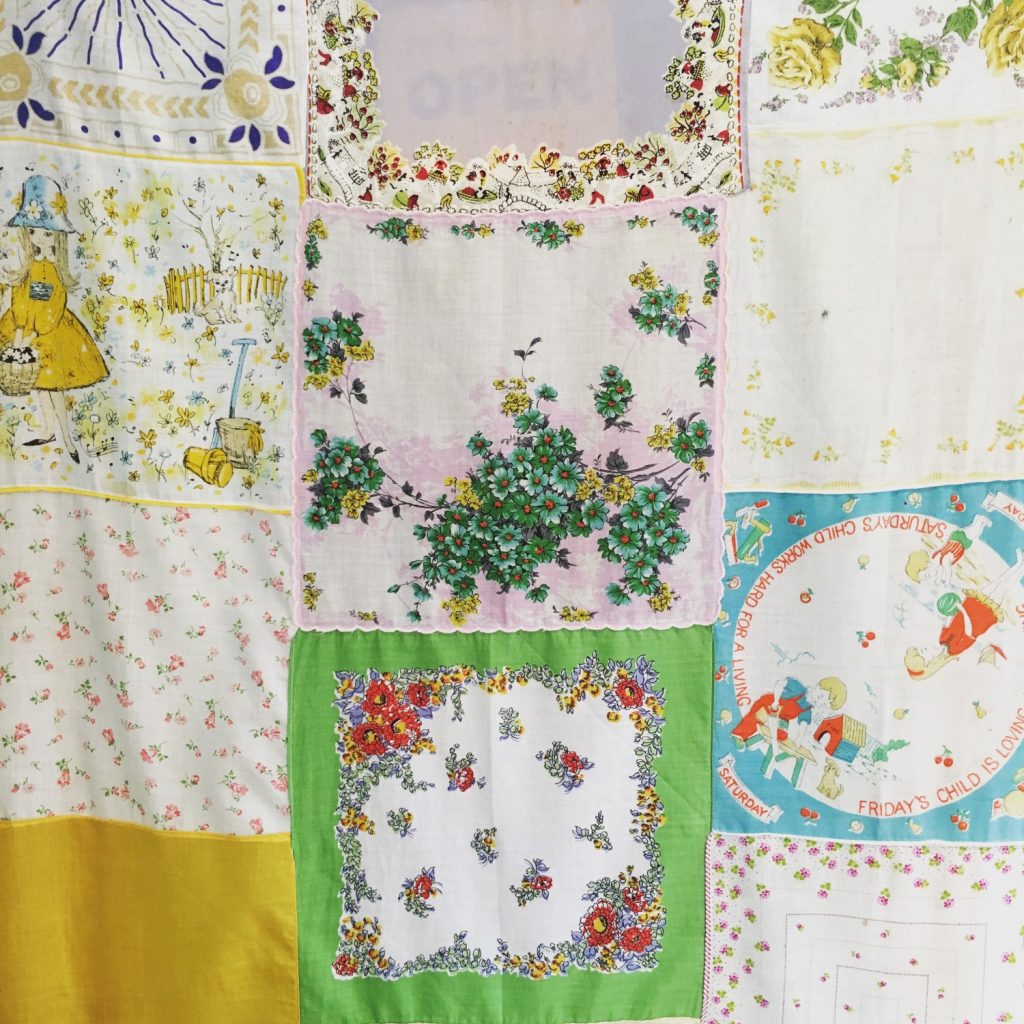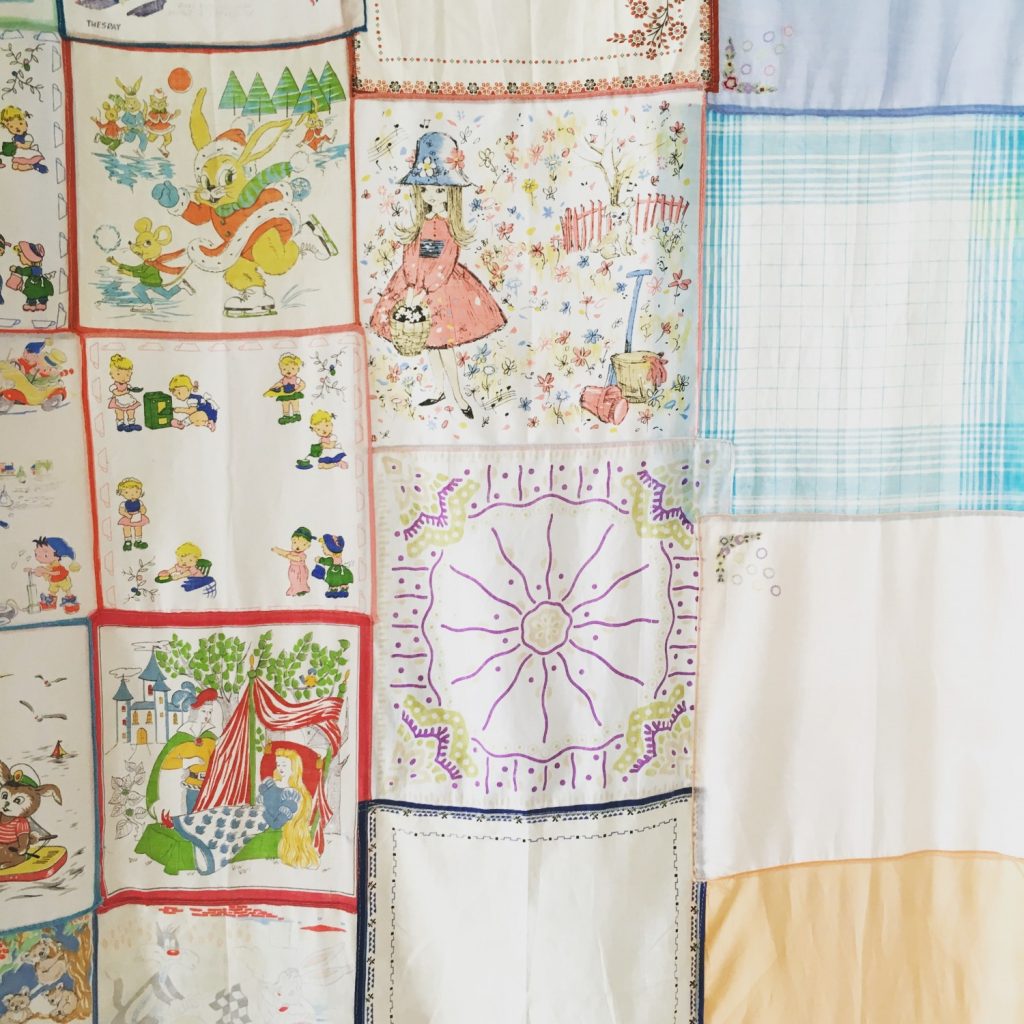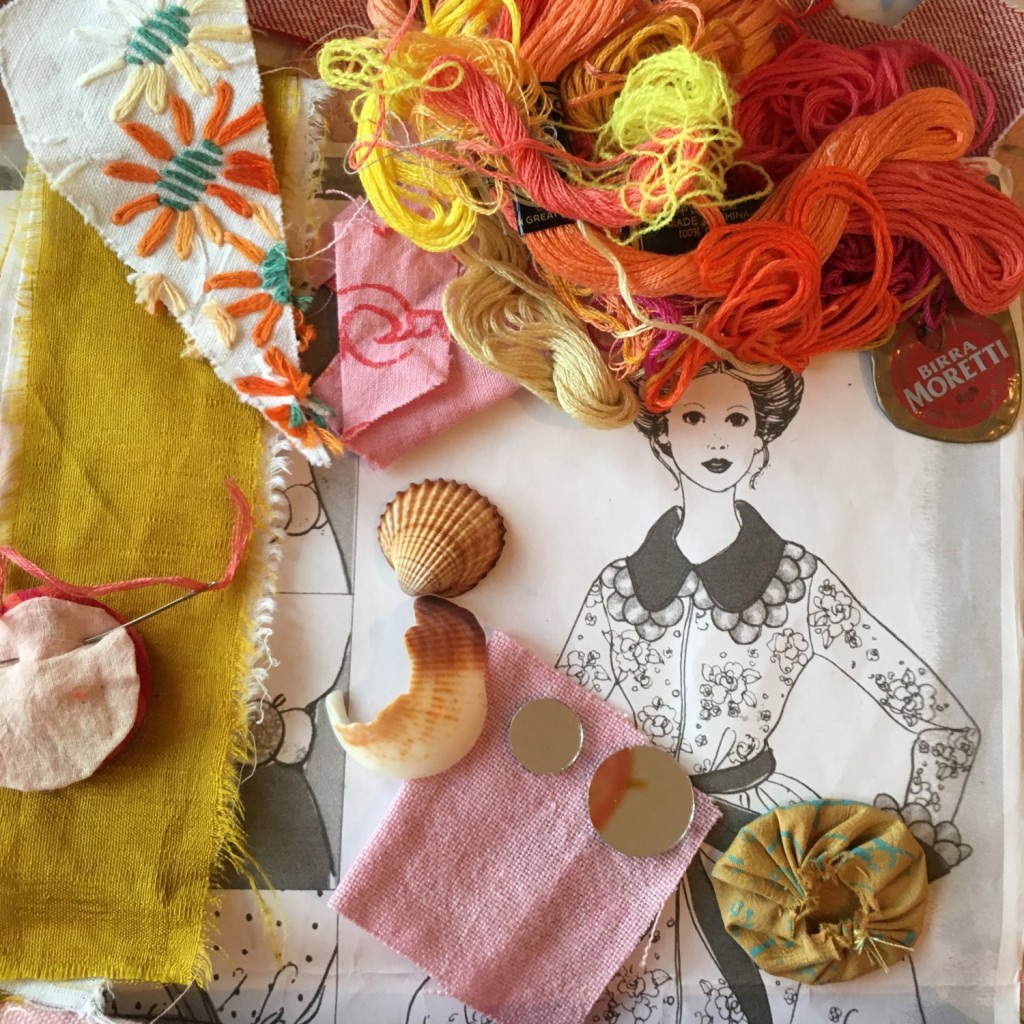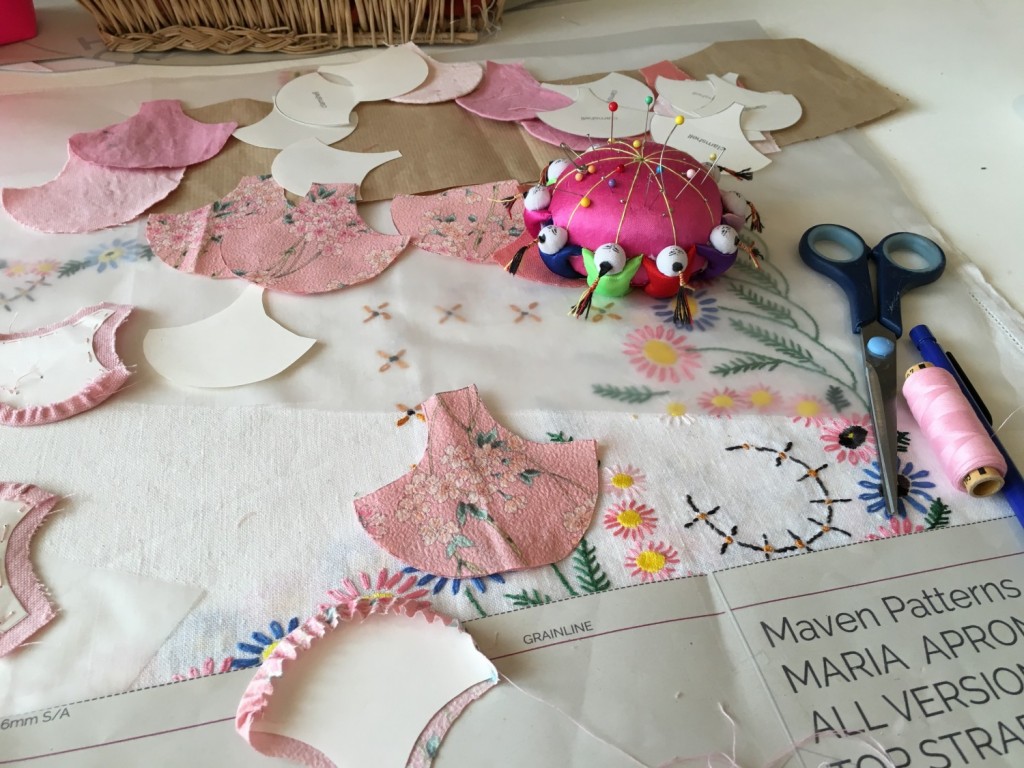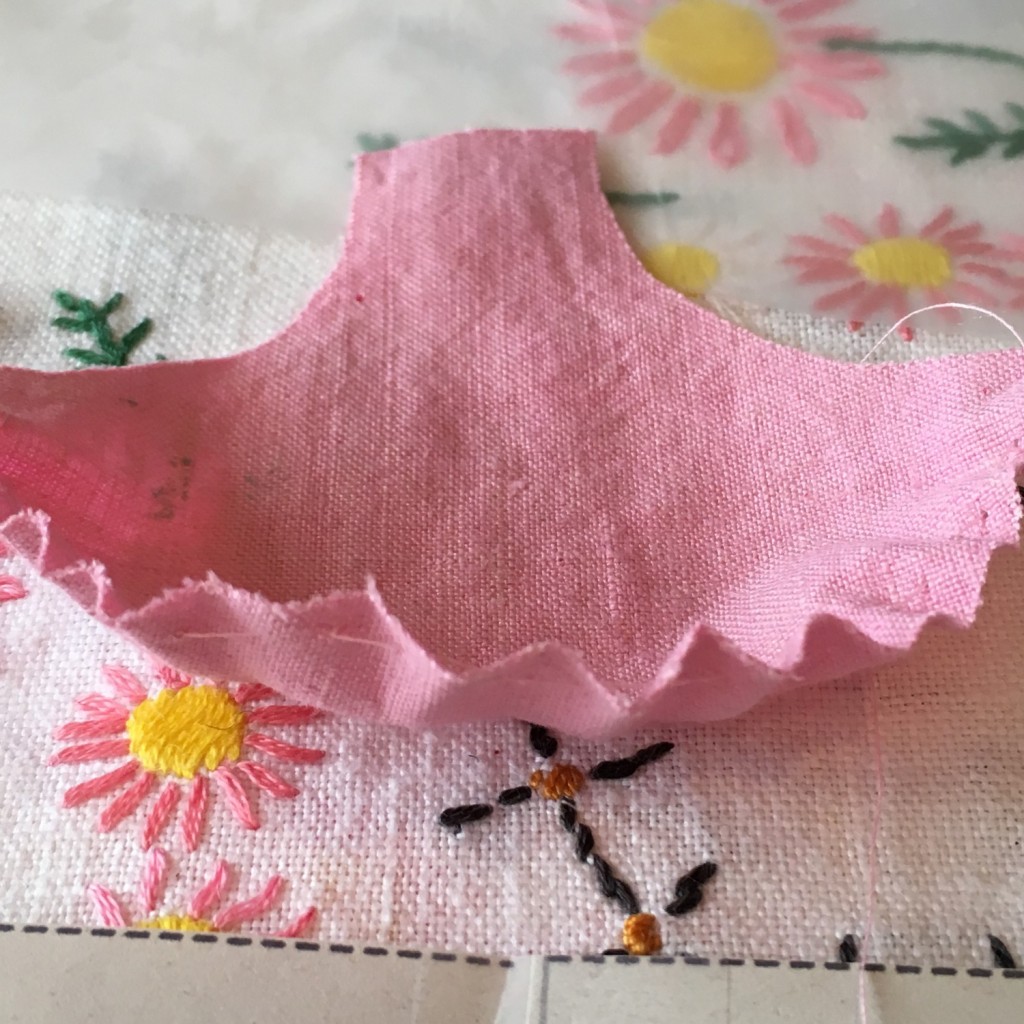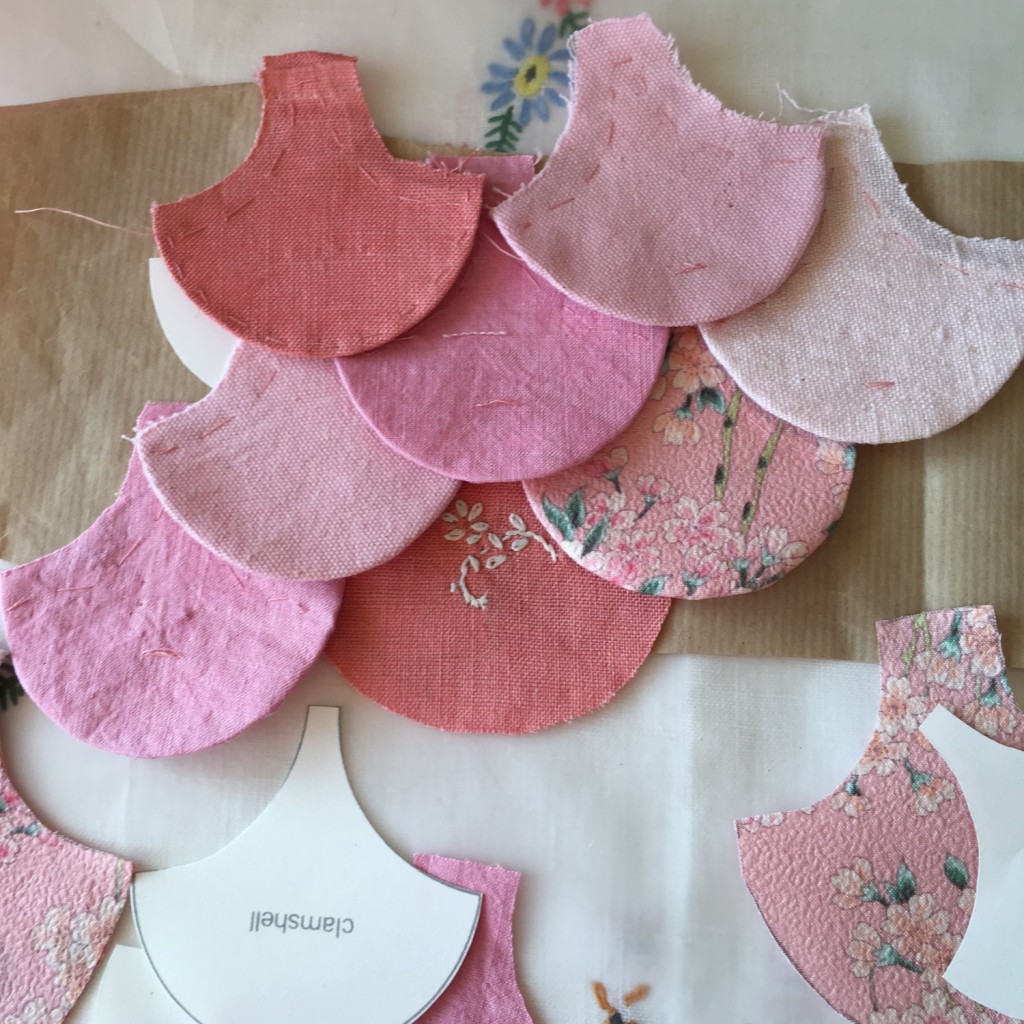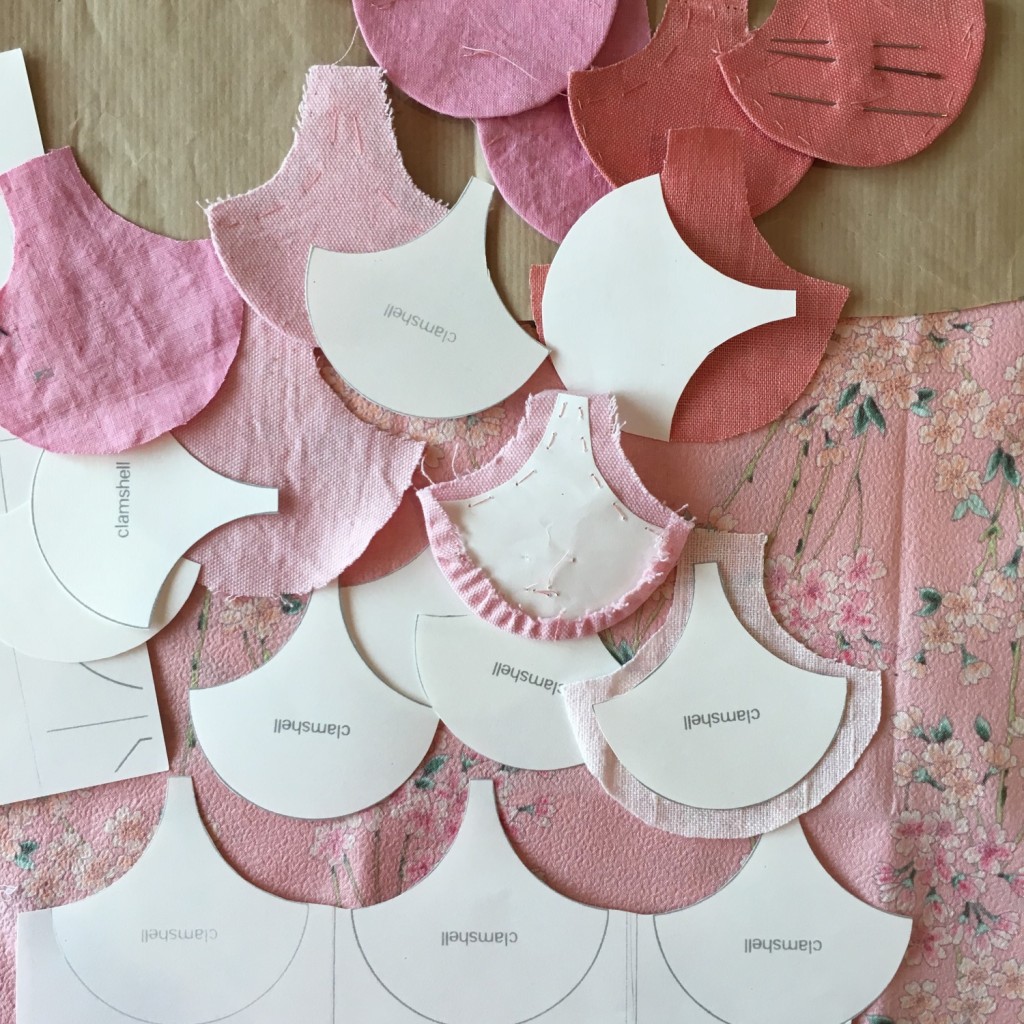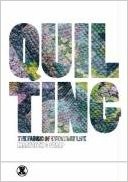its a lovely feeling when a thing comes together…. folding, rolling, holding, wrapping, hugging, cuddling, securing, caring and comforting a precious creation. I’ve been working on this piece for some time now, twenty one years it appears though i didn’t know it at the time.
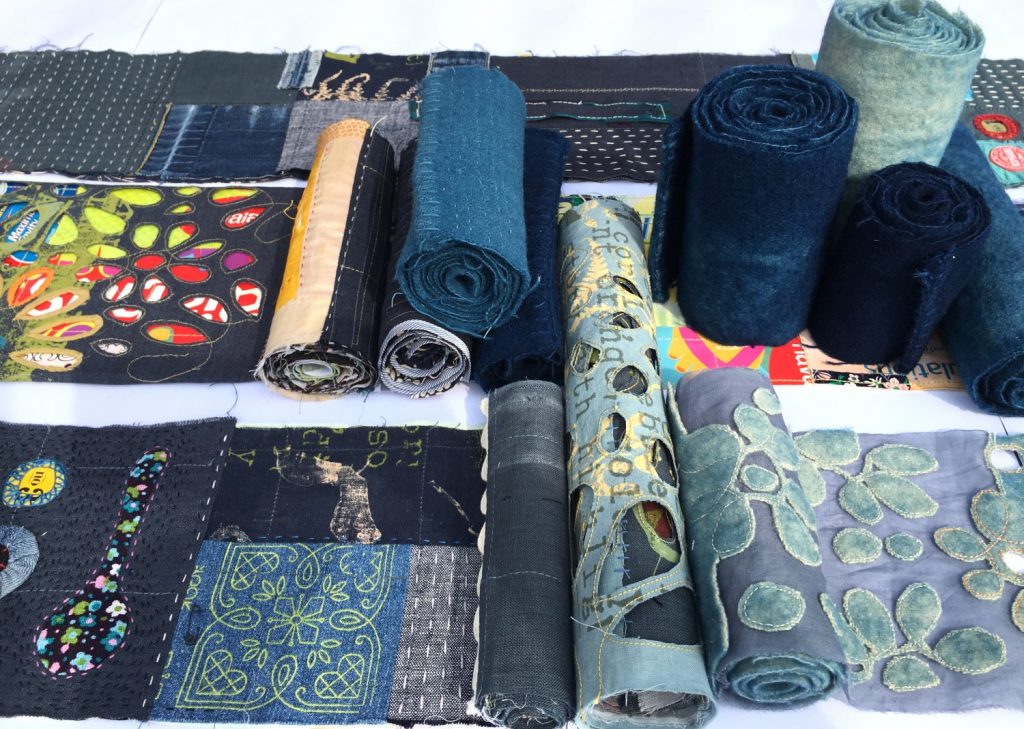
My eldest boy leaving home has created a void I didn’t see coming. Though I felt it months before as his independence grew, its only now as I reflect that it becomes crystal clear. Mending, fixing, parenting the cloth to be fit for the child – making good for them, then letting go for their independence to grow – how much is enough? The essence of him lurks everywhere in residual memories, even the laundry bin contains a void. He’s not gone in the forever sense, but freed himself of his childhood island, gone to find his adult being, leaving me (the parent) suspended or paused..
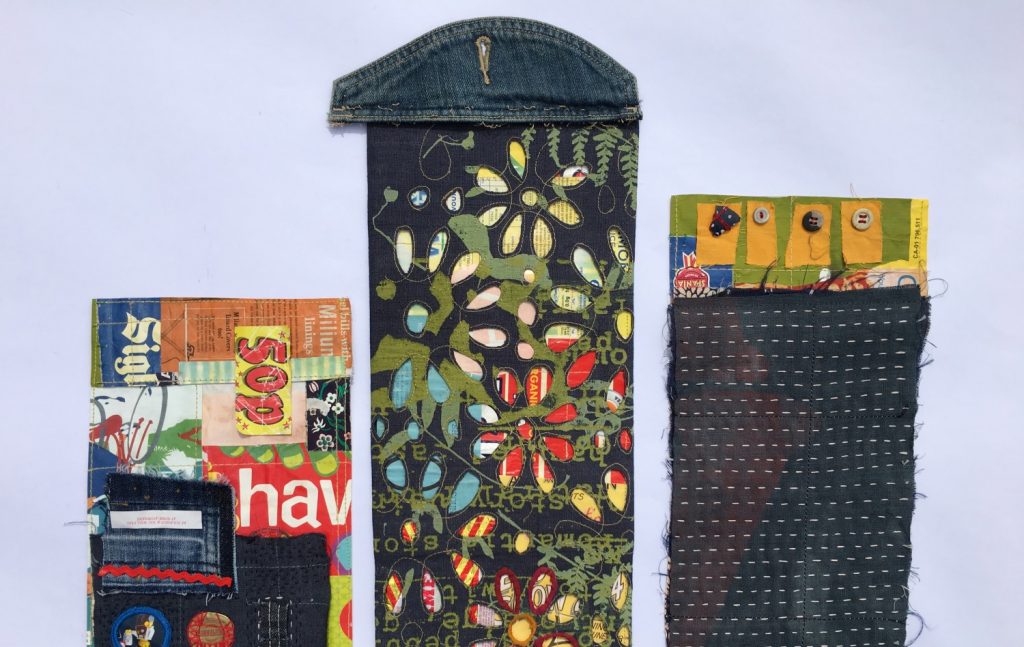
So I’ve taken to my work using some of the clothes and paper ephemera he left behind – indigo dyeing, Kantha stitching, applique with organdy and quilted collage.
